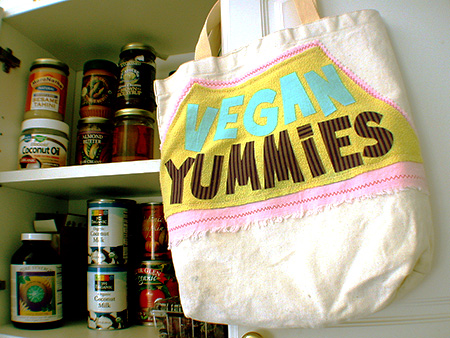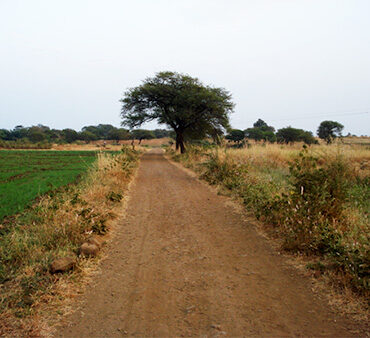Attend a workshop on veganism or one of its offshoots—raw food, anyone?—and you’re given a list of reasons to adopt said diet:
“Veganism has ‘reduced’ my diabetes.”
“I haven’t fallen sick in 7 years!”
“It controls cholesterol and heart diseases.”
“It is against cruelty to animals.”
“You will lose so much weight!”
“You will never suffer an acne outbreak ever again.”

Why can’t we all just abandon labels and enjoy food the way we’re meant to? Photograph by Sean and Lauren.
The list is endless. Having attended workshops on veganism, researched and written stories for newspapers, and adopted the diet for a month in 2011, I sincerely feel that its spokespeople would say ANYTHING to get people to turn vegan. Anything, that is, except how amazing vegan and raw food can be when prepared with love.
It is this kind of positioning—quit milk or die painfully—that has led traditional and modern Indian diners to believe that they need to be fatally ill before they can sample dishes approved by a vegan diet. This to me is really, really sad because I actually like foods that are devoid of milk, cream, and butter. Does that make me a vegan? No, not really. But I’m not dying just yet.
As we travel across the world of food, adding words like ‘scarmoza’ and ‘chorizo’ to our vocabulary, we are increasingly being served a spate of diets, imported with as much gusto as cold cuts and cheeses.
While some like the Paleo Diet come bearing controversy (club your dinner to death!), others like the Body Reset Diet come celebrity-endorsed (Lady Gaga loves this). Veganism too has its share of controversies: a couple in America was arrested for putting their newborn on a vegan diet after it resulted in the infant’s death, whereas celebrities from Bill Clinton to James Cameron dabble in it.
But here’s my issue with diets—be they vegan, raw, caveman, or Kimkins: why do they need to piggyback on celebrities, the fear of death, or both in order to be popular? Why can’t we all just abandon labels and enjoy food the way we’re meant to?
The pizza without cheese at Ray’s Cafe, Mumbai, tastes pretty good. But by calling it ‘Vegan Pizza’ on the menu they automatically find the (seriously) odd customer asking for “the vegan pizza with cheese”. The grilled veggie sandwich at Salt Water Cafe, Mumbai, again, is definitely vegan lest you opt for an add-on of mozzarella or chicken. But it doesn’t say so on the menu and you would never guess unless you really thought about it! At a recent raw food workshop I realised that pesto with walnuts tastes much better with cucumber and carrots than regular pesto does with beef carpaccio. Chocolate soya milk makes for a refreshing drink after workouts and rassam, soup/curry best slurped out of steel glasses, doesn’t necessarily need ghee to taste any better.
It’s 2013 and we’ve got a whole world of food opening up to us. We’ve also got a cluster of diets being thrown into the mix. But what we really need is a way to promote food for the love of it rather than how bad/beneficial it can be, because for every argument—“Raw food can cure”—there’s a counter argument—“Raw food causes digestive problems”.
At the end of the day we don’t need flow charts, clocks, and calculators telling us what to eat, when to eat, and how much of it we should eat. We do, however, need to be smart and instinctive about what we choose to put in our bodies based on how it makes us feel after.








